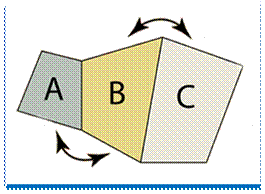Gas Laws explain the behavior of an ideal gas in terms of temperature, pressure, volume.
The following are the some of the important gas laws:
§ Boyle’s Law
§ Charles Law
§ Gay-Lussac’s Law
§ Avogadro’s law
§ Universal Gas Law

Boyle’s law states that the volume of a given mass of gas (V) is inversely proportional to its absolute pressure (P), provided the temperature of the gas (T) remains constant.
Boyle’s law formula

According to Charles law, the volume of a given mass of gas (V) is directly proportional to its absolute temperature (T), when its pressure remains constant.
Charles law formula

Gay-Lussac’s Law:
Gay-Lussac’s Law is also know as Amontons’ law. It states that if the volume of a given mass of a gas (V) is kept constant, then the pressure of the gas (P) is directly proportional to its absolute temperature (T).
Gay-Lussac’s Law Formula

Avogadro’s Law:
Avogadro’s law states that equal volumes of different perfect gases, at the same temperature (T) and pressure (P), contain equal number of molecules (n).
Avogadro’s law equation

Universal Gas Law:
Combined Gas law is derived from the three gas laws Boyles law, Charles law and Gay-Lussacs law.
Universal Gas Law Formula

If an object with a higher temperature comes in contact with an object of lower temperature, it will transfer heat to the lower temperature object. The objects will approach the same temperature and in the absence of loss to other objects, they will maintain a single constant temperature. Therefore, thermal equilibrium is attained.
The Thermodynamics Zeroth Law states that if two systems are at the same time in thermal equilibrium with a third system, they are in equilibrium with each other. 
If objects A and C are in thermal equilibrium with B, then object A is in thermal equilibrium with object C. Practically this means all three objects are at the same temperature and it forms the basis for comparison of temperatures.
The Zeroth Law of Thermodynamics states that:-
Two system which are equal in temperature to a third system are equal in temperature to each other.